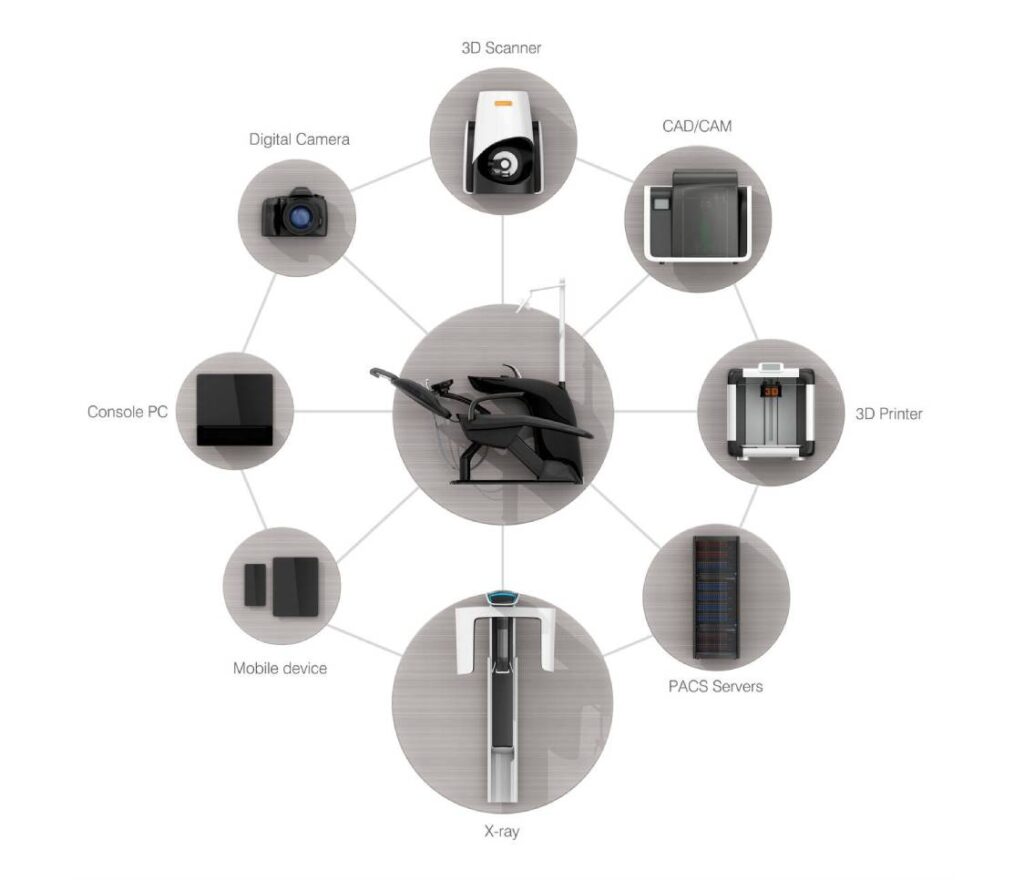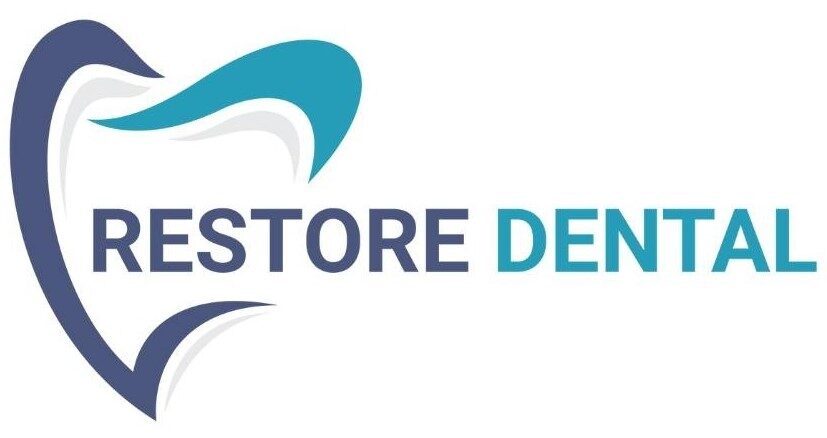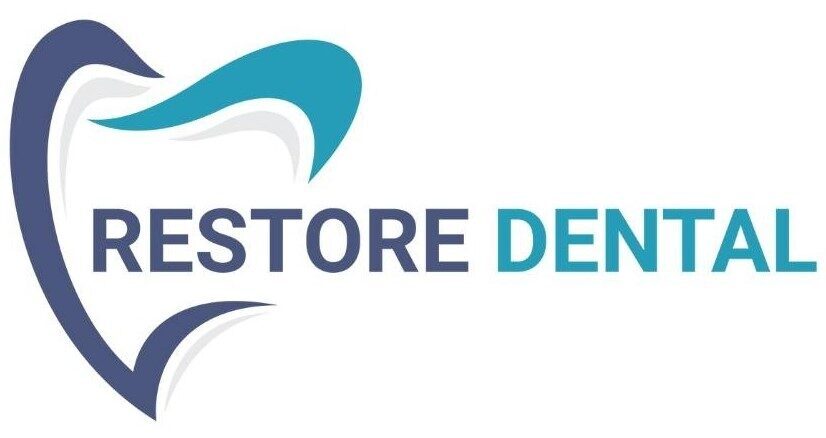services
Digital Dentistry
Digital dentistry refers to the integration of computer-based technologies—including both hardware and software—into dental procedures and workflows. These innovations aim to enhance precision, efficiency, and patient comfort by replacing traditional manual methods with computer-aided tools.
One of the most transformative advancements is digital scanning, which allows dentists to take impressions, perform diagnostics, and plan treatments without relying on conventional mechanical instruments. In dental laboratories, tools such as digital impression scanners and CAD/CAM design software streamline the creation of dental restorations, significantly reducing manual labor and turnaround time.
The origins of digital dentistry can be traced back to 1984, when French dentist Dr. François Duret first introduced the use of CAD/CAM technology for dental impressions. Since then, dental professionals worldwide have developed and patented a wide range of digital tools to improve the accuracy and effectiveness of treatment planning and delivery.
Despite these advancements, the global adoption of digital dental technologies remains gradual. According to recent market research, approximately 85% of dental clinics still rely on traditional impression-taking methods using trays. This indicates that while the digital transformation of dentistry is well underway, there is still considerable room for growth in embracing these innovative solutions. At Restore Dental, we are proud to be at the forefront of digital dentistry in Gurgaon, offering cutting-edge tools and techniques that enhance precision, comfort, and overall patient experience.

What is meant by digital dentistry?
Digital dentistry uses advanced digital technologies to replace traditional tools and techniques, making dental care more accurate, efficient, and patient-friendly.
Key innovations include:
- Digital X-rays: Faster imaging with less radiation than traditional radiographs.
- Laser Cavity Detection: Diode lasers detect decay more accurately than manual explorers.
- CAD/CAM Technology: Allows same-day restorations without physical impressions.
- 3D Digital Impressions: Scans teeth to create precise models, replacing plaster moulds.
- Electronic Prescriptions: Streamlines patient records and improves medication management.
Overall, digital dentistry enhances precision, reduces treatment time, and improves patient comfort.
What is the difference between digital dentistry and traditional dentistry?
The shift from traditional to digital dentistry goes beyond just using modern tools—it transforms the entire workflow, accuracy, and patient experience. Here’s a side-by-side look at how the two approaches differ across key attributes:
Attribute | Digital Dentistry | Traditional Dentistry |
Workflow | Streamlined and fully digitized; integrates
imaging, design, and records in one system | Manual processes with separate steps and off-site lab work |
Patient Comfort | High – uses non-invasive digital impressions and faster procedures | Moderate – involves physical moulds and longer appointments |
Accuracy | Excellent – enhanced precision through 3D imaging and CAD/CAM | Variable – depends on technician skills and
physical materials |
Equipment | Intraoral scanners, software, 3D printers, digital X-rays | Impression trays, hand tools, alginate, and
analogue X-rays |
Record Storage | Stored digitally with cloud access and easy
retrieval | Paper-based records that require physical storage
space |
Customization | Easy adjustments with digital design tools | Time-consuming redos if changes are needed |
Learning Curve | Requires training in digital tools and software | Skill-based with minimal tech adaptation |
Is digital dentistry the future?
Technology has revolutionized dentistry, bringing faster, more precise, and patient-friendly treatments. Digital dentistry includes tools like intraoral scanners, 3D imaging, CAD/CAM systems, and digital records, replacing traditional manual methods.
Key Benefits:
- Faster procedures with same-day restorations
- Improved accuracy in diagnosis and treatment planning
- Enhanced patient comfort with non-invasive techniques
- Better record management through digital storage
- Cost and time efficiency for both patients and dentists
Studies show that patients prefer digital techniques for their speed and comfort. Digital workflows also reduce errors and improve clinical outcomes. As more practitioners adopt these tools, dentistry is shifting toward a more advanced, efficient, and accessible future.
What is the latest technology in dentistry?
Modern dentistry is embracing technology to enhance accuracy, comfort, and outcomes. Here are some of the key innovations transforming dental care:
- Digital X-Rays: Safer, faster imaging with lower radiation and clearer diagnostics.
- Intraoral Scanners: 3D digital impressions for precise crowns, aligners, and restorations.
- CAD/CAM Technology: In-office design and fabrication of crowns and bridges—often same-day.
- AI Diagnostics: Detects cavities and issues early with smart image analysis.
- Teledentistry: Enables virtual consultations and care for remote patients.
- Laser Dentistry: Minimally invasive treatment for gums, cavities, and whitening.
- Smart Toothbrushes: Track and improve brushing habits through mobile apps.
- 3D Printing: Creates custom dental devices like aligners, retainers, and surgical guides.
- Regenerative Dentistry: Emerging field focused on naturally repairing tooth tissues.
- Ozone Therapy: Uses ozone gas to kill bacteria and support healing without drilling.
- AR/VR: Enhances dental education, patient understanding, and procedure planning.
What is the future of dentistry with AI?
Artificial Intelligence is reshaping the way dental professionals diagnose and treat oral conditions. A clinical expertise
Dental clinic in Gurgaon, we combine skills with digital innovation to offer a full spectrum of modern dental services—from preventive care to advanced prosthodontics and digital smile design, we’re exploring AI’s capabilities to:
- Enhance diagnostic precision through advanced image analysis
- Personalize treatment plans with predictive tools
- Support patient education through simulations and 3D visualizations
- Automate administrative tasks, allowing dentists to focus on patient care
With a background in engineering and a passion for dentistry, we view AI not just as a tool, but as an essential partner in delivering ethical, empathetic, and high-quality oral healthcare.
Your Smile Deserves the Best!
Get in Touch with Restore Dental
Our team at Restore Dental is here to help! Fill out the form below, and we’ll get back to you as soon as possible. Let’s bring back your healthy, confident smile!
FAQs
1. What is digital dentistry?
Digital dentistry refers to the use of digital or computer-based technologies in dental procedures. This includes tools like digital imaging, computer-aided design and manufacturing (CAD/CAM), and 3D printing to improve diagnosis, treatment planning, and the creation of dental restorations.
2. What are the benefits of digital dentistry?
Digital dentistry offers several advantages, including:
Enhanced Precision: Digital tools allow for more accurate impressions and fittings.
Improved Efficiency: Procedures can be completed faster, often reducing the number of visits required.
Better Patient Comfort: Techniques like digital impressions eliminate the need for traditional molds, making the experience more comfortable.
Predictable Outcomes: Advanced imaging and planning tools help in visualizing results before treatment begins.
3. How does digital dentistry improve diagnostics?
Digital imaging technologies, such as digital X-rays and 3D scans, provide detailed and accurate views of dental structures. This aids in early detection of issues and more effective treatment planning.
4. Is digital dentistry safe?
Yes, digital dentistry is safe. Digital X-rays, for example, expose patients to less radiation compared to traditional X-rays, enhancing patient safety.
5. Can digital dentistry be used for all dental procedures?
While digital dentistry has revolutionized many aspects of dental care, its applicability depends on the specific procedure and the technology available at the dental practice. It’s best to consult with your dentist to understand how digital technologies can be utilized in your treatment.
For personalized information and to learn how digital dentistry can benefit your oral health, consider consulting with a dental professional experienced in these technologies.
Discover More - Expert Articles on Digital Dentistry

Revolutionizing Dental Care with Digital
Dentistry
The Digital Era of Dentistry at Restore Dental At Restore Dental, we’re proud to be leading the way in modern dentistry…

Revisiting Cone-Beam CT in Dentistry – A Contemporary Perspective
Cone-beam computed tomography (CBCT) Cone-beam computed tomography (CBCT) has revolutionized dental and…

The Rise of Digital Dental X-Rays – What You Need to Know in 2025
The Rise of Digital Dental X-Rays As dental practices continue to evolve, digital dental radiography has….


